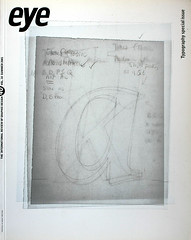Summer 2001
Density, magic, genius and loss
Jimmy Corrigan: The Smartest Kid on Earth
Chris Ware<br> Jonathan Cape, £18Chris Ware’s comic strip was originally published in Chicago’s alternative New City paper and Ware’s own Acme Novelty Library. In keeping with its nostalgic tone, the book takes the form of an old-fashioned photo album – its extraordinary dust jacket reminiscent of both early twentieth-century Russian graphic design and an electronic circuit diagram, unfolding into a double-sided poster that includes, among other things, the lineage of the characters, a cut-out 3D model of Jimmy, a pictorial history of the Great Chicago Fire, reviewers’ testimonials and a shopping list. As the collection’s deluxe format (and 25,000 initial print run) will introduce Ware’s work to a wider audience – one perhaps unaccustomed to the comic strip’s formal conventions – the inside cover thoughtfully offers instructions on how to set about reading the pages that follow.
Essentially a story of stillness and inhibition, the book’s non-linear narrative moves between dreams and reality, through past, present and anticipated future, its various scenarios linked by a thematic counterpoint of sadness and magic whose patterns repeat across four generations. We join Jimmy’s quest for love and connection when, at the age of 36, the tedium of his life (in which the purchase of an answering machine is an event of monumental proportions) is interrupted by the arrival of a letter from his unknown father. As the history of Jimmy’s forebears is uncovered, their tangled family lines reveal symmetries that span a century of American culture.
Despite its visual charm and occasional whimsy, Jimmy’s miniaturised cartoon world is one in which fathers abandon children, brutality is routine and loneliness remains insoluble. A fear of being disliked leaves Jimmy paralysed, alienated by surroundings that mock his hopes at every turn. While others find comfort in cruelty, indifference and sabotage, for Jimmy, as for his grandfather, joy is rare and almost always found in dreams. (The light from a bedside lamp takes the form of a luminous thread that floats through the open window and stretches out into the night. When the lamp is turned off, its thread is severed, the golden strand drifting free into the darkness.)
Whereas comic book narratives typically compress all events into action, truncating the passage of time, Ware prefers to linger, depicting thoughtful interludes and long, awkward silences of excruciating emptiness. While languorous in pace, the book is also dense in nuance and detail, from painstaking architectural renderings and intricate causal diagrams to subtle, shifting colour schemes of sepias and greys. Ware’s experiments with the graphic form – in terms of size, framing, perspective and time – heighten the stifling banality of Jimmy’s familial encounters, inviting plausible comparisons with the textual innovations of James Joyce. Best read in a single sitting, Jimmy Corrigan is perceptive, poetic and sometimes profound, generously rewarding the absorption it requires.
David Thompson, writer, Sheffield
First published in Eye no. 40 vol. 10, 2001
Eye is the world’s most beautiful and collectable graphic design journal, published for professional designers, students and anyone interested in critical, informed writing about graphic design and visual culture. It is available from all good design bookshops and online at the Eye shop, where you can buy subscriptions and single issues.

